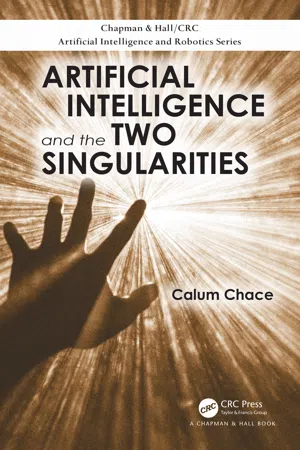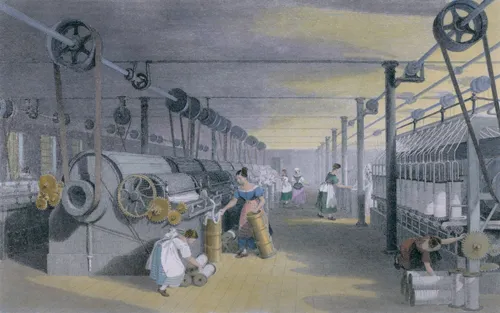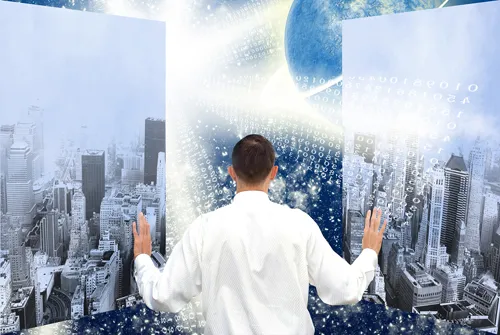![]()
III
The Economic Singularity
![]()
CHAPTER 12
The History of Automation
12.1 THE INDUSTRIAL REVOLUTION
For a process that began hundreds of years ago, the start date for the Industrial Revolution is surprisingly controversial. Historians and economists cannot even agree how many industrial revolutions there have been: some say there has been one revolution with several phases, others say there have been two and others say more. It has become fashionable to say that we are entering a fourth, but as I will explain shortly, I think this is very unhelpful.
The essence of the Industrial Revolution was the shift from manufacturing goods by hand to manufacturing them by machine, and the harnessing of better power sources than animal muscle. So a good date for its beginning is 1712, when Thomas Newcomen created the first practical steam engine for pumping water. For the first time in history, humans could generate more power than muscles could provide – wherever they needed it.
The replacement of human labour by machines in manufacturing dates back considerably earlier, but they were powered by muscles or by wind or water. In the fifteenth century, Dutch workers attacked textile looms by throwing wooden shoes into them. The shoes were called sabots, and this may be the etymology of the word ‘saboteur’. A century later, around 1590, Queen Elizabeth (the First) of England refused a patent to William Lee for a mechanical knitting machine because it would deprive her subjects of employment.
In the second half of the eighteenth century, the Scottish inventor James Watt teamed up with the English entrepreneur Matthew Boulton to improve Newcomen’s steam engine so that it could power factories and make manufacturing possible on an industrial scale. At the same time, iron production was being transformed by the replacement of charcoal with coal, and ‘canal mania’ took hold, as heavy loads could be transported more cheaply by canal than by road or sea.
Later, in the mid-nineteenth century, steam engines were improved sufficiently to make them mobile, which ushered in the United Kingdom’s ‘railway mania’ of the 1840s. Projects authorised in the middle years of that decade led to the construction of 6,000 miles of railway – more than half the length of the country’s current rail network. Other European countries and the United States emulated the United Kingdom’s example, usually lagging it by a decade or two.
Towards the end of the nineteenth century, Sir Henry Bessemer’s method for converting iron into steel enabled steel to replace iron in a wide range of applications. Previously, steel had been an expensive commodity, reserved for specialist uses. The availability of affordable steel enabled the creation of heavy industries, building vehicles for road, rail, sea, and later the air.
As the twentieth century arrived, oil and electricity provided versatile new forms of power and the industrial world we recognise today was born. The changes brought about by these technologies are still in progress.
In summary, we can identify four phases of the Industrial Revolution:
1712 onwards: The age of primitive steam engines, textile manufacturing machines and the canals
1830 onwards: The age of mobile steam engines and the railways
1875 onwards: The age of steel and heavy engineering, and the birth of the chemicals industry
1910 onwards: The age of oil, electricity, mass production, cars, planes and mass travel
From an early twenty-first‑century standpoint, it seems entirely natural that the Industrial Revolution took off where and when it did. In fact, it is something of a mystery. Western Europe was not the richest or most advanced region of the world: there were more powerful empires in China, India and elsewhere. There is still room for debate about whether the technological innovations came about in England at that time because of the cultural environment, the legal framework or the country’s fortuitous natural resources. Fascinating as these questions are, they need not detain us.
12.2 THE INFORMATION REVOLUTION
12.2.1 Uncertain Timing
Even though the Industrial Revolution is still an ongoing process, there is general agreement that we are now in the process of an information revolution. There is less consensus over when it began or how long it is likely to continue.
The distinguishing feature of the information revolution is that information and knowledge became increasingly important factors of production, alongside capital, labour and raw materials. Information acquired economic value in its own right. Services became the mainstay of the overall economy, pushing manufacturing into second place, and agriculture into third.
One of the first people to think and write about the information revolution and the information society was Fritz Machlup, an Austrian economist. In his 1962 book, The Production and Distribution of Knowledge in the United States, he introduced the notion of the knowledge industry, by which he meant education, research and development, mass media, information technologies and information services. He calculated that in 1959, it accounted for almost a third of US GDP, which he felt qualified the United States as an information society.
Alvin Toffler, author of the visionary books Future Shock (1970) and The Third Wave (1980), argued that the post-industrial society has arrived when the majority of workers are doing brain work rather than personally manipulating physical resources – in other words, when they are part of the service sector. Services grew to 50% of US GDP shortly before 1940,1 and they first employed the majority of working Americans around 1950.
We have seen that the start and end dates of the economic revolutions (agricultural, industrial and information) are unclear. What’s more, they can overlap, and sometimes reignite each other.
An example of this overlap is provided by the buccaneers who preyed on Spanish merchant shipping en route to and from Spain’s colonies in South America during the seventeenth century. (Some of these buccaneers were effectively licensed in their activities by the English, French and Dutch crowns, which issued them with ‘letters of marque’. This ceased when Spain’s power declined towards the end of the century, and the buccaneers became more of a nuisance than a blessing to their former sponsors.) When a buccaneer raiding party boarded a Spanish ship, the first thing they would look for and demand was the maps. Charts – a form of information which improve navigation – were actually more valuable than silver and gold.2
An example of one revolution reigniting another is that the Industrial Revolution enabled the mechanisation of agriculture, causing a second agricultural revolution, making the profession of farming more effective and more efficient. The information revolution does the same, providing farmers with crops that are more resilient in the face of weather, pests and weeds, and allowing them to sow, cultivate, and harvest their crops far more accurately with satellite navigation.
12.2.2 It’s Not the Fourth Industrial Revolution
Klaus Schwab, founder and executive chairman of the World Economic Forum which hosts the annual meeting of the global elite in Davos, describes the arrival of ubiquitous, mobile supercomputing, intelligent robots and self-driving cars as the fourth industrial revolution.3 He has published a book of that name which contains much to be admired, but the nomenclature is confusing and unhelpful.
This is not the first time someone has claimed that a new technology heralded the fourth industrial revolution – in fact it is at least the sixth. (The other five, since you ask, were atomic energy in 1948, ubiquitous electronics in 1955, computers in 1970, the information age in 1984 and finally, nanotechnology.)4
Even if what is happening now was part of the Industrial Revolution, then the list of phases given in Section 12.1 suggests that it would be the fifth, not the fourth.
But the most important problem with the label is that it greatly understates the importance of what is happening. The transition to an artificial intelligence (AI)-centric world is not the fourth industrial revolution, but it might be the fourth in a much bigger series of revolutions.
12.2.3 … But it Might Be the Fourth Human Revolution5
The first great revolution to transform the nature of being human was the cognitive revolution, which took place around 50,000–80,000 years ago, and in which we acquired the communication skills which turned a low-level scavenger into the most fearsome predator on the planet. (This is a controversial thesis among anthropologists, who argue about when it happened and how long it took.)
Next came the agricultural revolution which turned foragers into farmers. It happened in different parts of the world at different times from around 12,000 years ago. It gave us mastery over animals and generated food surpluses which allowed our population to grow enormously. It enabled the rise of cities, which have been described as engines of innovation. It made the lives of most individual humans considerably less pleasant, but it greatly advanced the species.
The third great revolution was the industrial one, which in many ways gave us mastery of the planet. Coupled with the enlightenment and the discovery of the scientific method, it ended the perpetual tyranny of famine and starvation, and brought the majority of the species out of the abject poverty which had been the fate of almost every human before. For most people in the developed world, it created lifestyles which would have been the envy of kings and queens in previous generations.
The information revolution is our fourth great transformation, and, as you will have gathered, this book argues that it will have even more profound impacts than any of its predecessors.
12.3 THE AUTOMATION STORY SO FAR
12.3.1 The Mechanisation of Agriculture
The particular...



